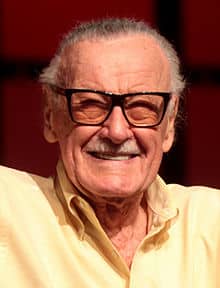Timeline

Dec 28, 1922
Stan is born
Stan is born as Stanley Martin Leiber on December 22, 1922 to Romanian immigrants Jack and Celia Leiber in New York, New York.
Jun 3, 1932
Stan's childhood
Over a period of many years, Stan loved to read story's like The Hardy Boys and seeing movies with his family. The Great Depression hits and Stan's parents lose their jobs and are forced to move into a much smaller home. Stan still continues to read and eventually gets out of school at a very young age.
May 3, 1939
Stan's time at Timely comics
At only age 17, Stan is hired as, he liked to joke, a "gopher" for Timely Comics Inc. Stan's job was to bring paint for empty containers, fetch the CEO's lunch and to wait for the next complaint from the artists. In 1940, Timely creates the star spangled hero, Captain America because of the opposing threat of the Nazis. One day, the artists get so mad with each other that they quit, including the editor. In 1941, Stan is hired as the editor for Timely at only age 19!
Jan 11, 1942
Stan goes to war
Stan is enlisted in World War 2. Surprisingly, he does not fight with a weapon. He fights with cartoons! Stan draws funny cartoons to cheer up soldiers and give hope to family's. When the war is over, Stan returns home.
Dec 5, 1947
Stan gets married
Stan gets married to a British woman named Joan in 1947. Stan later joked that when he first met her, he blurted out "I love you" and he later regretted saying that.
Nov 6, 1961
Stan creates his first comic-book
After having two children, Joan Celia Lee and Jan Lee (who died only a week after birth), Stan decides to think of new creative ideas for new heroes. This eventually leads up to the creation of The Fantastic Four in the month of November, 1961.